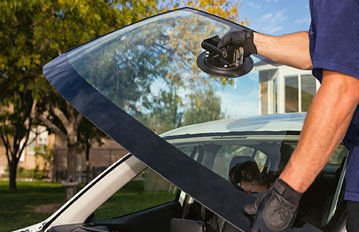Discovering which windshield is the best for your vehicle can be a daunting process. Below we provide an overview of the different options you have when you need to replace your windshield.
There are two different types of glass used to make windshields: laminated and tempered.
Laminated
Laminated windshields are made by using heat and extreme pressure to merge two pieces of glass together. In the middle of this fusion is a plastic called polyvinyl butyral. The plastic catches the glass when a crack occurs to prevent it from harming passengers.
Laminated glass is more common than tempered glass because chips and cracks can be repaired without replacing the windshield. Laminated glass also is great for UV protection, soundproofing, and design versatility.
Tempered
Tempered glass is made by a technique called air quenching—glass is heated then immediately blasted with frigidly cold air. This technique makes the glass four times stronger than regular annealed glass.
When a tempered glass shields break, they disperse into small rounded spheres to prevent hurting the passengers. However, they’re also not repairable because tempered glass breaks immediately upon impact. Tempered glass windshields must be immediately replaced.
There are three different outlets to purchase your windshield from. As always, call your insurance beforehand to find out what type your plan covers.
Now let’s discuss the types of windshields from most expensive to least expensive.
Dealer
Dealer windshields are often the safest and most expensive option. They come straight from the dealership and are the exact same windshield that was used in your car. They have a stamp on the bottom for authenticity. In reality, however, the windshields are purchased from the manufacturer.
Original Equipment Manufacturer (OEM)
OEM windshields come directly from the source. The manufacturer has specifications for each automaker and each model. They put the windshields through extensive testing to meet high-quality standards, more so than aftermarket windshields. OEM windshields are less expensive than purchasing from dealers because they don’t have the automaker stamp at the bottom.
Original Equipment Equivalent (Aftermarket)
Aftermarket windshields still have strict regulations; however, they may not meet the specifications of OEM windshields. This is a favorite of many insurance companies since it is the cheapest option.
But don’t let this option scare you! Aftermarket windshields can be of quality if bought from the right source. Certain nationwide companies use aftermarket windshields in the U.S., but of course, it is a matter of personal preference.
If you still don’t know which windshield type will best fit your needs, feel free to call Mr. Glassworks and get a recommendation. We will use your personal preferences, budget, and car’s make and model to suggest the best option for you.

10 Comments
I'm about to get a used Nissan Skyline GTR R34 next month and I've been looking for any car terminologies that I need to learn. I find it interesting to learn that there are multiple windshield types per vehicle. The idea of having a glass that disperses into small rounded spheres that would not hurt passengers is very interesting. I should share this with my friends since all of us decided to get a car at the same time.
LNPgukWJGKwEA
ByfkrngdxS
mdKgawLzTO
hKwcLYMuNpJexDs
yMhFTDnekgsf
lRxTGHBVZEmJNkuU
BHkwgMfFuVlLNEPS
Leave A Comment